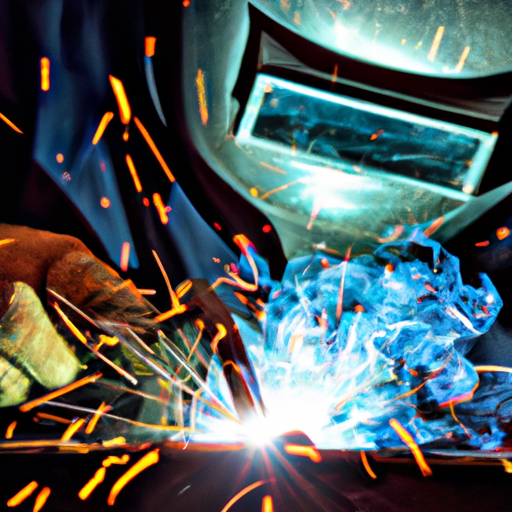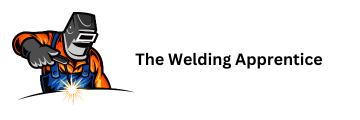If you’ve ever been curious about diving into the world of welding but hesitated due to its perceived complexity, fear not! This article is here to guide you towards the easiest weld to learn. We’ll explore various types of welding techniques and break down their level of difficulty, allowing you to confidently take your first steps into this dynamic and rewarding craft. So, if you’re ready to embark on an exciting journey of creating with metal, let’s discover the easiest weld for you!
Understanding Welding Basics
Welding, in simple terms, is the process of joining two or more metal pieces together using heat and pressure. It is widely used in various industries and is a crucial skill to possess. Learning welding can open up a whole new world of opportunities for you. But before we delve into the specifics of different welding techniques, let’s first understand the basic features and importance of welding.
Definition and features of welding
Welding involves the fusion of metals through the application of heat. This process can be accomplished using various techniques, such as MIG (Metal Inert Gas) welding, TIG (Tungsten Inert Gas) welding, stick welding, or flux-cored welding. Each technique has its own unique characteristics, but they all serve the same purpose of joining metal pieces.
During the welding process, a filler material is often used to strengthen the bond between the two metals. This filler material melts along with the metal pieces, creating a strong and permanent connection. Welding can be done on various types of metals, including steel, aluminum, and stainless steel.
Importance of learning welding
Learning welding is more than just acquiring a new skill – it is a gateway to a wide range of career opportunities. In today’s world, skilled welders are in high demand, and the need for their expertise spans across multiple industries, including construction, automotive, aerospace, and manufacturing.
By mastering the art of welding, you not only gain the ability to create and repair metal structures, but you also become an essential asset in building a sustainable future. Welding plays a crucial role in constructing buildings, bridges, pipelines, and even in the development of advanced technologies. It is the backbone of many industries, driving innovation and progress.
Different types of welding techniques
There are several welding techniques to choose from, depending on the materials you are working with and the desired outcome of your project. Let’s explore some of the most commonly used welding techniques:
-
MIG Welding: Also known as Gas Metal Arc Welding (GMAW), MIG welding is one of the most popular and easiest welding techniques to learn. It involves the use of a wire electrode and a shielding gas to create a strong bond between the metal pieces.
-
TIG Welding: Tungsten Inert Gas (TIG) welding is a precise and versatile technique that uses a non-consumable tungsten electrode and a separate filler rod. It requires excellent hand-eye coordination and is often used for precision welding in industries like aerospace and automotive.
-
Stick Welding: Stick welding, also known as Shielded Metal Arc Welding (SMAW), is a practical technique that uses a consumable electrode covered in flux. It is commonly used for construction and maintenance projects and is suitable for working with thick materials.
-
Flux-Cored Welding: Similar to MIG welding, flux-cored welding utilizes a continuous wire electrode. However, it has a flux-filled core that provides a shielding gas, eliminating the need for an external gas source. This technique is ideal for outdoor and windy conditions.
Now that we have a general understanding of welding basics, let’s take a closer look at one of the easiest welding techniques to learn – MIG welding.
Introduction to MIG Welding
MIG welding, also known as Gas Metal Arc Welding (GMAW), is a versatile and beginner-friendly welding technique. It offers several advantages over other welding methods, making it an excellent choice for both beginners and experienced welders.
Basic concept of MIG welding
MIG welding involves the use of a wire electrode that is continuously fed through a welding gun. A shielding gas, such as argon or a mixture of gases, is also used to protect the weld pool from atmospheric contamination. As the wire electrode passes through the welding gun, it melts and fuses with the base metal, creating a strong bond.
One of the key advantages of MIG welding is its ability to join a wide variety of metals, including steel, stainless steel, and aluminum. It also allows for faster welding speeds, increasing productivity and efficiency. Additionally, MIG welding offers excellent control over the weld pool, resulting in clean and precise welds.
Equipment used in MIG welding
To get started with MIG welding, you will need a few essential pieces of equipment. Here are the key components:
-
MIG Welder: This is the main equipment used in MIG welding. It consists of a power source, a wire feeder, and a welding gun. MIG welders come in different sizes and power outputs to suit various welding needs.
-
Welding Gun: The welding gun is the handheld tool that holds the wire electrode and directs the shielding gas during the welding process. It is equipped with a trigger to control the wire feed and arc initiation.
-
Wire Electrode: MIG welding uses a consumable wire electrode, which acts as both the filler material and the electrode. The wire comes in various diameters and compositions, depending on the type of metal you are working with.
-
Shielding Gas: The choice of shielding gas depends on the type of metal being welded. Common shielding gases include argon, carbon dioxide, and mixes of these gases. The main purpose of the shielding gas is to protect the weld from contamination by gases in the atmosphere.
Safety measures during MIG welding
Safety should always be a top priority when engaging in any welding activity. Here are some crucial safety measures to follow during MIG welding:
-
Personal Protective Equipment (PPE): Wear appropriate PPE, including welding gloves, a welding helmet with a darkened lens, a flame-resistant jacket or apron, and safety glasses or goggles.
-
Proper Ventilation: Ensure there is adequate ventilation in your workspace to prevent the buildup of harmful fumes and gases. Work in well-ventilated areas or use exhaust fans to maintain air circulation.
-
Fire Safety: Keep a fire extinguisher nearby and be aware of the potential fire hazards associated with MIG welding. Clear the workspace of flammable materials and have a plan in case of fire emergencies.
-
Grounding: Always make sure your workpiece is properly grounded to prevent electrical hazards. This involves connecting the workpiece to the welding machine with a grounding clamp.
-
Electrode Handling: Handle the wire electrode with care to prevent injuries. Avoid touching the hot wire or resting it on your skin or clothing. Use proper tools to guide the wire into the welding gun.
By following these safety measures, you can ensure a safe and enjoyable MIG welding experience.
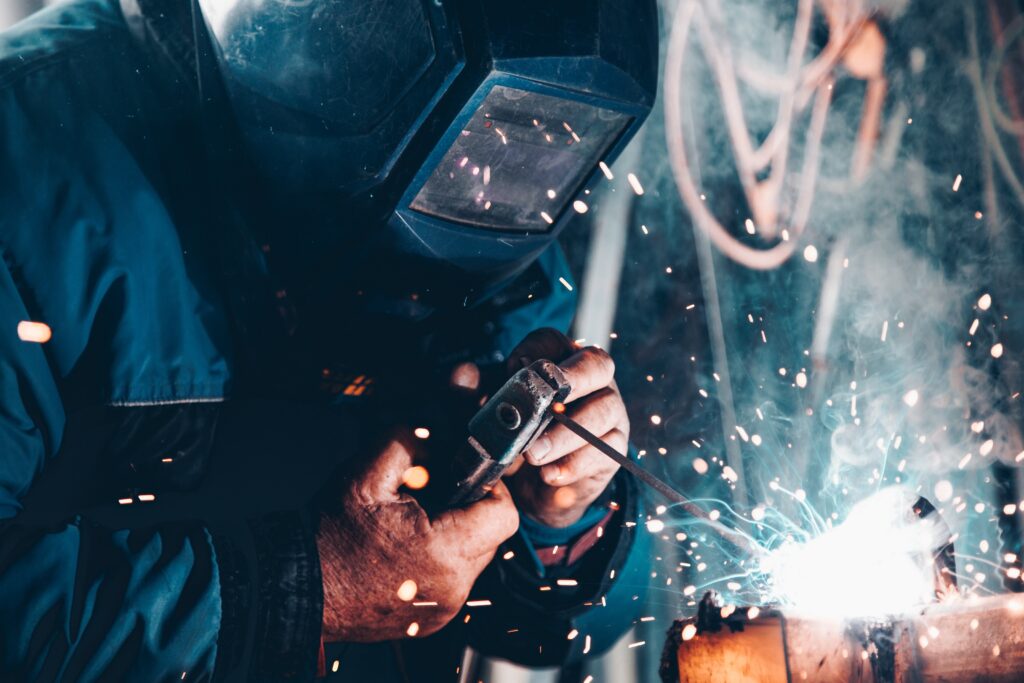
Why MIG is Easiest to Learn?
If you are new to welding or looking for a welding technique that is easy to learn, MIG welding should be at the top of your list. Here are a few reasons why MIG welding is considered the easiest welding technique:
Simplicity of MIG welding techniques
MIG welding is known for its simplicity and ease of use. The process of setting up a MIG welder is relatively straightforward, and the operation itself is simple to grasp. With a little practice and guidance, even beginners can quickly become proficient in MIG welding.
The continuous wire feed system used in MIG welding eliminates the need for frequent electrode changes, making it more efficient and time-saving compared to other techniques. Additionally, MIG welding produces clean and neat welds, thanks to its control over the weld pool and automatic adjustment of voltage and wire feed speed.
Versatility of MIG welding
MIG welding is highly versatile and can be used to weld a wide range of materials and thicknesses. Whether you are working with thin sheet metal or thick steel plates, MIG welding allows for excellent control and precision.
MIG welding can be used for various applications, including automotive repairs, fabrication works, and even artistic projects. The ability to weld different metals, such as steel, aluminum, and stainless steel, expands the possibilities and allows you to take on a variety of projects.
Low risk involved in MIG welding
Compared to some other welding techniques, MIG welding carries a lower risk of weld defects, such as porosity and lack of fusion. The continuous wire feed and consistent voltage settings of MIG welding make it easier to maintain a stable and controlled arc.
MIG welding also generates less spatter compared to other techniques, reducing the need for extensive post-weld cleaning and grinding. This not only saves time but also ensures high-quality welds without compromising the structural integrity of the joint.
With its simplicity, versatility, and low risk, MIG welding is the ideal starting point for beginners looking to gain confidence and develop their welding skills.
Learning MIG Welding: Step by Step Guide
Ready to dive into the world of MIG welding? Here is a step-by-step guide to help you get started:
Gathering necessary tools and safety gear
Before beginning any welding project, it’s essential to gather all the necessary tools and safety gear. Here’s a list of items you will need:
- MIG Welder: Choose a MIG welder that suits your specific needs and is of good quality.
- Welding Gun: Make sure you have a compatible welding gun for your MIG welder.
- Wire Electrode: Select the appropriate diameter and composition of the wire electrode for your project.
- Shielding Gas: Determine the suitable shielding gas based on the type of metal you are welding.
- Personal Protective Equipment (PPE): Wear welding gloves, a welding helmet, a flame-resistant jacket or apron, safety glasses or goggles, and steel-toed boots.
Setting up a MIG welder
Now that you have all the necessary tools and safety gear, it’s time to set up your MIG welder. Follow these steps:
-
Power Source: Ensure that your MIG welder is properly connected to a reliable power source. Check the manufacturer’s instructions for specific voltage and amperage requirements.
-
Wire Installation: Install the wire electrode into the welding gun according to the manufacturer’s guidelines. Make sure the wire is properly aligned and securely held in place.
-
Gas Connection: Connect the appropriate shielding gas to the MIG welder. Consult the equipment’s manual for instructions on how to connect the gas cylinder and regulate the flow rate.
-
Wire Feed Speed and Voltage: Set the wire feed speed and voltage settings on your MIG welder based on the specifications provided by the wire manufacturer and the thickness of the metal you are welding.
-
Ground Connection: Attach the grounding clamp to your workpiece, ensuring a firm connection. Proper grounding is essential for safety and efficient welding.
Mastering the welding techniques
With your MIG welder set up and ready to go, it’s time to start practicing the welding techniques. Here are some tips to help you master MIG welding:
-
Positioning: Hold the welding gun with a comfortable grip and maintain a stable position. Position the gun at approximately a 10-15 degree angle and aim the tip towards the joint or workpiece.
-
Arc Initiation: Depress the trigger on the welding gun to initiate the arc. Take your time and ensure a smooth and steady arc initiation.
-
Welding Motion: Maintain a consistent travel speed and create a steady welding motion. Move the gun in a back-and-forth or circular motion, following the joint, to create an even weld bead.
-
Electrode Extension: Keep a constant electrode extension of about 3/8 to 1/2 inch. Maintaining the proper electrode extension helps control the heat and the penetration of the weld.
-
Clean Start and Finish: Practice creating clean starts and finishes to ensure a neat and visually appealing weld. Avoid abrupt stops or overlaps at the beginning and end of the weld.
Remember, practice makes perfect. Dedicate time to practicing the MIG welding techniques on scrap metal or practice pieces before moving on to actual projects. Experiment with different settings and positions to get a feel for the process and to refine your skills.
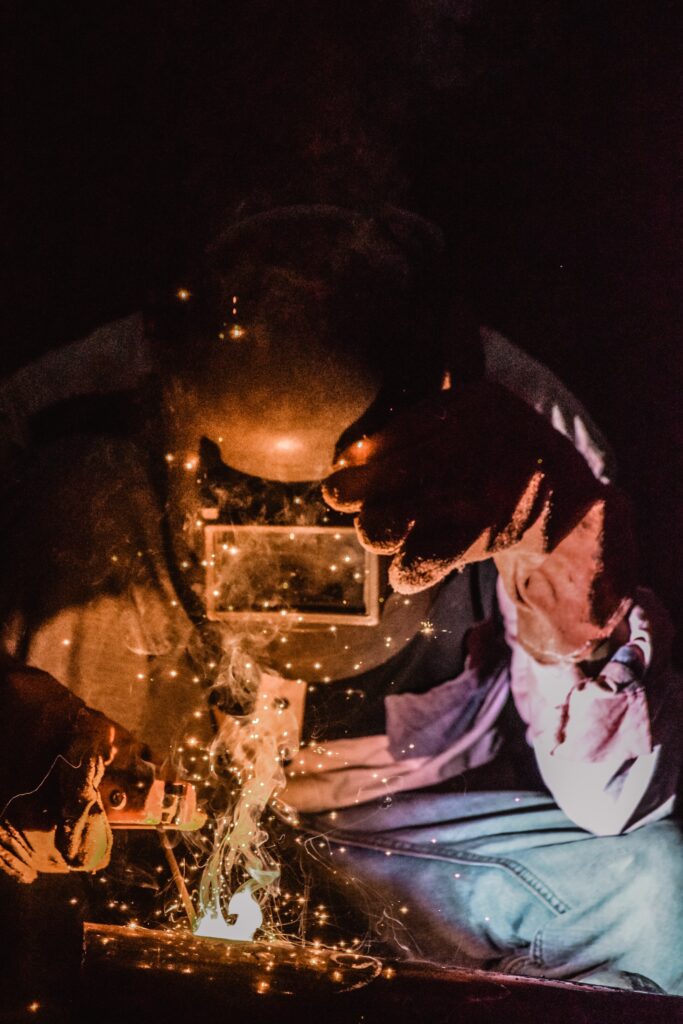
Tips to Enhance MIG welding skills
To further enhance your MIG welding skills, consider these additional tips:
Continuous practice
The key to becoming proficient in MIG welding is practice. Dedicate regular time to welding and engage in various projects to broaden your experience. The more you practice, the better you will become at controlling the arc, maintaining a steady motion, and producing quality welds.
Start with simple projects
When starting out, it’s best to begin with simple projects before tackling more complex ones. By starting with smaller tasks, such as joining two metal plates or practicing weld beads, you can focus on perfecting your technique without feeling overwhelmed. As you gain more confidence and skill, you can gradually take on more challenging projects.
Understanding the importance of shielding gas
Shielding gas is a critical element in MIG welding, as it helps protect the weld pool from contamination and prevents porosity. Take the time to understand the different types of shielding gases and their applications. Experiment with different gas mixtures to determine which one works best for the specific metal you are welding.
By incorporating these tips into your practice routine, you will steadily improve your MIG welding skills and develop a strong foundation for welding success.
Common Mistakes in MIG Welding
Even with proper practice and knowledge, it’s easy to make mistakes during MIG welding. Here are some common errors to watch out for:
Improper setting of voltage and wire speed
One of the most frequent mistakes is incorrect adjustment of voltage and wire feed speed. Setting the wrong parameters can result in poor weld quality, including lack of penetration or excessive spatter. It is crucial to refer to the welding parameters provided by the wire and machine manufacturers and make adjustments accordingly.
Insufficient shielding gas
Insufficient shielding gas coverage can lead to weld defects, such as porosity and oxidation. Ensure that the gas flow rate is set correctly and that the nozzle of the welding gun is positioned close enough to the joint. Practice proper positioning and monitor the gas flow throughout the welding process.
Incorrect angle or distance
Maintaining the correct angle and distance between the welding gun and the workpiece is vital for achieving optimal weld results. Holding the gun too far or too close to the joint can result in uneven welds, lack of fusion, or excessive heat distortion. Experiment with different angles and distances to find the optimal position for each welding project.
It’s important to stay vigilant and learn from these common mistakes. By avoiding these errors and constantly improving your technique, you will consistently produce high-quality MIG welds.
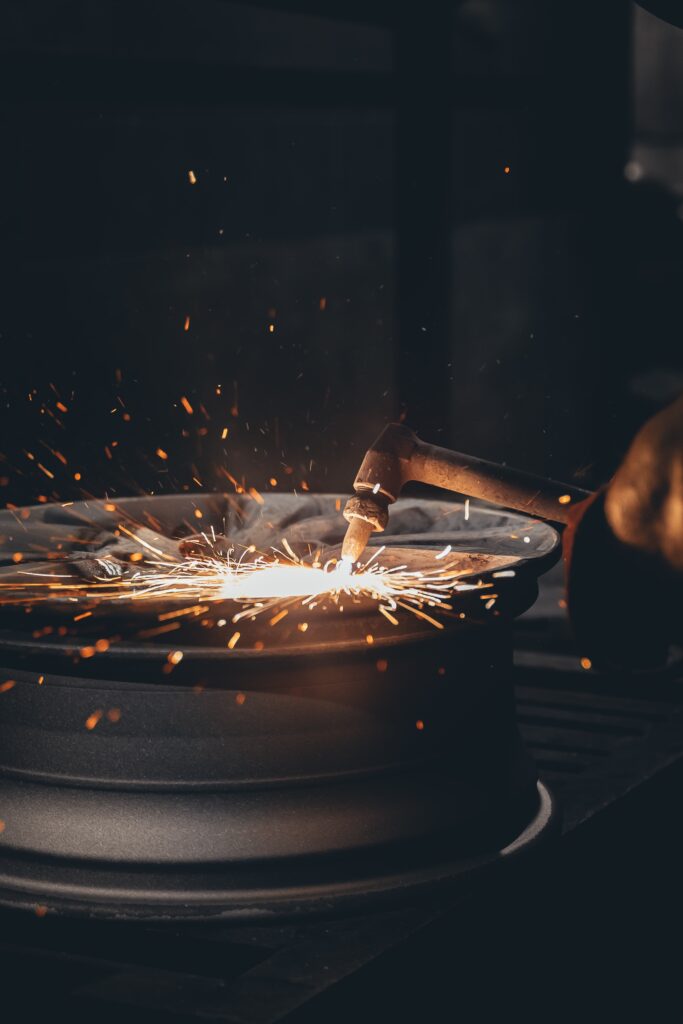
Introduction to Other Welding Techniques
While MIG welding is a versatile and easy-to-learn technique, it’s essential to be aware of other welding methods in the industry. Here’s a brief introduction to a few popular welding techniques:
TIG Welding
TIG welding, also known as Gas Tungsten Arc Welding (GTAW), is a precise and intricate welding process. It uses a non-consumable tungsten electrode and a separate filler rod to create high-quality welds. TIG welding is commonly used in applications that require precise control, such as welding aluminum, stainless steel, and thin materials.
Stick Welding
Stick welding, also referred to as Shielded Metal Arc Welding (SMAW), is a versatile and robust welding technique. It uses a consumable electrode covered in flux, which provides a shielding gas and a protective slag. Stick welding is commonly used in construction and maintenance projects, providing excellent performance on thick materials and in outdoor environments.
Flux-Cored Welding
Flux-cored welding is a variation of MIG welding that uses a continuous wire electrode with a flux-filled core. This self-shielding technique eliminates the need for an external shielding gas. Flux-cored welding is known for its high deposition rates and suitability for outdoor welding in windy conditions.
Each welding technique has its own unique characteristics and applications. Having a basic understanding of these methods can broaden your welding knowledge and allow you to choose the most appropriate technique for each project.
Comparison between MIG and Other Welding Techniques
Now that we have explored MIG welding and briefly introduced other welding techniques, let’s compare MIG welding to some of these methods:
Ease of learning
Among the different welding techniques, MIG welding stands out as the easiest to learn, especially for beginners. Its simplicity, automatic adjustments, and versatility make it an ideal choice for those new to welding. TIG welding, on the other hand, requires more skill and precision, making it a more complex technique to master.
Application range
MIG welding offers a wide application range, allowing you to weld various metals, including steel, stainless steel, and aluminum. It is suitable for both thin and thick materials, making it versatile for different projects. TIG welding is known for its precision and control, making it ideal for delicate work and welding exotic materials like titanium and magnesium.
Pros and Cons
Here are some pros and cons to consider when comparing MIG welding with other techniques:
-
MIG Welding:
- Pros: Easy to learn, high welding speed, suitable for thicker materials, ability to weld steel, stainless steel, and aluminum, efficient.
- Cons: Limited penetration depth, requires a shielding gas, less suitable for precise and intricate work.
-
TIG Welding:
- Pros: Precise and clean welds, excellent control, suitable for exotic metals and thin materials, versatile joint types.
- Cons: More complex to learn, slower welding speed, often requires filler metal, less suitable for thicker materials.
-
Stick Welding:
- Pros: Versatile, suitable for thick materials, works well in outdoor conditions, minimal equipment requirements.
- Cons: Lower welding speed, more challenging to achieve clean welds, limited joint types, extensive post-weld cleaning required.
-
Flux-Cored Welding:
- Pros: High deposition rates, self-shielding capability, suitable for outdoor and windy conditions, deep penetration.
- Cons: Requires a flux-cored wire, potential for slag inclusion, limited suitability for thinner materials.
By considering the specific requirements of your project, you can determine which welding technique best suits your needs.
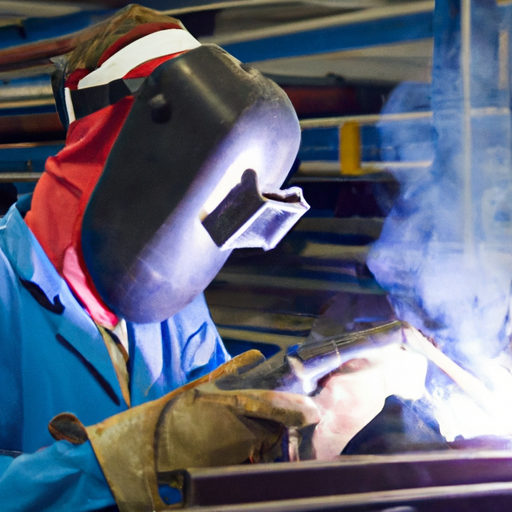
Career Opportunities in Welding
Welding offers a wide range of potential career opportunities. Skilled welders are in high demand across various industries, creating a favorable job market and vast prospects for those pursuing a career in welding. Let’s explore some key aspects of the welding job market:
Job prospects in welding
The demand for qualified welders continues to grow, with industries such as construction, manufacturing, automotive, aerospace, and shipbuilding seeking skilled professionals. Welders are needed to build, repair, and maintain vital infrastructure, machinery, and structures.
Furthermore, advancements in technology have opened new avenues for welding expertise, with industries like robotics, nuclear energy, and renewable energy relying on skilled welders for specialized tasks. The growing need for skilled welders ensures a stable and promising job market for welding professionals.
Average salary for a welder
The average salary for welders varies based on factors such as experience, location, and specialization. According to the U.S. Bureau of Labor Statistics, the median annual wage for welders, cutters, solderers, and brazers was $42,490 in May 2020. Experienced welders with advanced certifications and specialized skills can earn significantly higher salaries.
It’s important to note that wages can vary depending on the specific industry and geographical location. Certain industries, such as aerospace and the oil and gas sector, often offer higher salaries due to the complexity and specialized nature of the work.
Industries requiring welding skills
Welding skills are highly valued in a wide range of industries. Some of the industries that heavily rely on welding expertise include:
-
Construction and Infrastructure: Welders play a critical role in building bridges, buildings, pipelines, and various infrastructure projects. They are involved in structural fabrication, welding joints, and performing maintenance and repairs.
-
Manufacturing: The manufacturing industry encompasses a broad spectrum of fields, including automotive, machinery, appliances, and electronics. Welders are essential in ensuring the integrity and quality of the manufactured products.
-
Automotive and Aerospace: From vehicle assembly lines to aircraft production, welding is an integral part of these industries. Welders are involved in assembling and fabricating various components, such as frames, bodies, and engine parts.
-
Energy and Utilities: Welding is crucial in the energy sector, where pipelines, power plants, and renewable energy infrastructure require skilled welders for construction, maintenance, and repair work.
-
Shipbuilding and Maritime: Welding skills are in high demand in the shipbuilding and maritime industry. Welders play a vital role in constructing ships, oil rigs, and other marine structures.
These are just a few examples of the industries that require welding skills. As technology continues to advance, new opportunities are emerging, creating an ever-expanding demand for skilled welders.
Conclusion: Why Start with MIG Welding
In conclusion, MIG welding is an excellent starting point for beginners who want to learn welding. Its simplicity, versatility, and low risk make it an ideal technique to develop a strong foundation in welding skills. By mastering MIG welding, you gain access to a wide range of career opportunities and contribute to industries that rely on this invaluable skill.
Remember, practice is key to improving your welding skills. As you progress and gain confidence in MIG welding, you can explore other welding techniques and expand your knowledge base. Whether you choose to specialize in MIG welding or venture into other methods, the skills you acquire in MIG welding will serve as a solid transitional foundation.
In the 21st century, the significance of learning MIG welding cannot be understated. As industries evolve and technology advances, the demand for skilled welders will continue to grow. By honing your MIG welding skills, you position yourself for a successful future in a field that offers stability, lucrative opportunities, and the satisfaction of creating and building with your own hands. So, grab your welding helmet, pick up that welding gun, and embark on your journey to becoming a skilled MIG welder. The possibilities are endless, and the world is waiting for your welding expertise.
